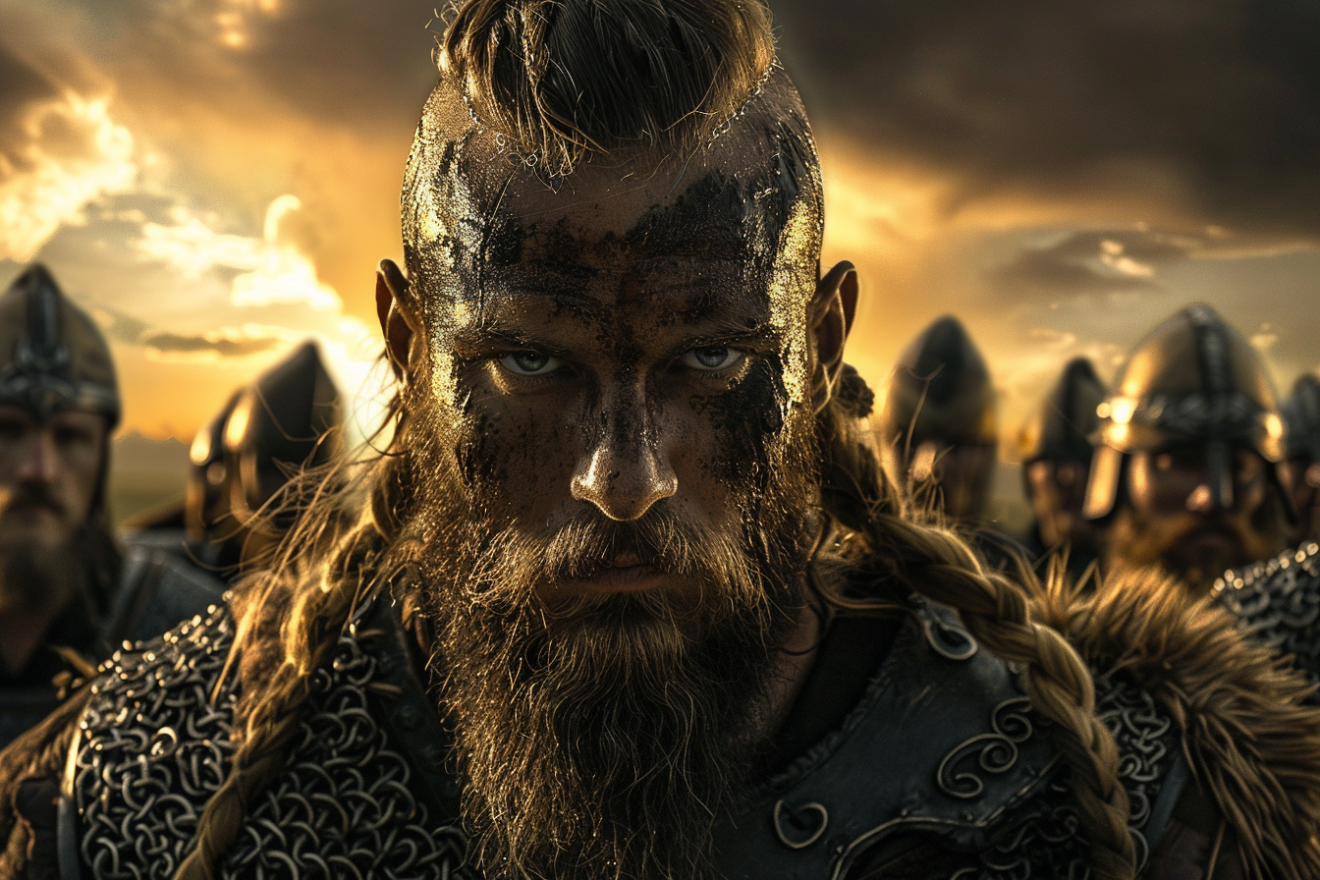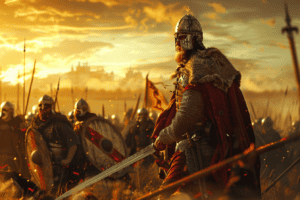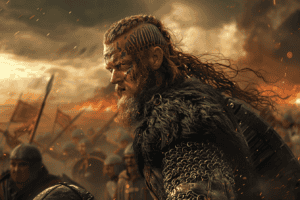Known for their brutal fighting style and superhuman strength, berserkers entered battle in a trance, releasing unmatched violence.
Scholars debate factors influencing their behavior, with substances like Amanita Muscaria suggested as a cause. Engaging in pre-combat rituals and altered mindsets, berserkers tapped into uncontrollable rage, amplifying their combat prowess.
Lets explore the intersection of history, mythology, and science to unravel the enigma of berserker frenzy, shedding light on their battlefield prowess.
Origins of Viking Berserker Phenomenon

The origins of the Viking Berserker phenomenon trace back to a blend of Norse mythology and historical records of intense Viking warfare. These warriors, known for their ferocious fighting style and seemingly uncontrollable rage, were believed to harness superhuman strength and fearlessness in battle. According to historical accounts, berserkers entered combat in a trance-like state, displaying unmatched brutality and prowess on the battlefield.
Scholars have long debated the factors contributing to the berserkers’ behavior. Some theories suggest that psychological conditions or cultural rituals played a role in their fearless demeanor. Moreover, the use of substances like the Amanita Muscaria mushroom has been proposed as a possible explanation for their seemingly altered state during battle.
The mysterious abilities of Viking berserkers continue to intrigue researchers, with the blend of Norse mythology, historical accounts, and potential influences shaping these legendary warriors into symbols of both awe and fear on the battlefield.
Rituals and Mindset of Berserkers

Exploring the rituals and mindset of Viking berserkers reveals intriguing practices and psychological states that influenced their fearsome reputation in battle. Before engaging in combat, berserkers were known for their ritualistic behaviors, often entering a trance-like state to harness their inner strength. This altered state of mind allowed them to tap into a fierce, uncontrollable rage, enhancing their combat abilities and giving them a fearless approach to battle.
Rituals were a significant aspect of berserkers’ preparation, with some practices involving the consumption of psychoactive substances like Amanita Muscaria to induce these altered states. In battle, berserkers fought with a relentless and fearless attitude, often eschewing armor and displaying seemingly superhuman strength. It was this combination of ritualistic behaviors, altered mindsets, and fearless approaches that contributed to the fearsome reputation and remarkable combat effectiveness of Viking berserkers on the battlefield.
Substances and Berserker Frenzy

Exploring the historical accounts and scholarly discussions surrounding the use of psychoactive substances like Amanita Muscaria sheds light on the potential link to the legendary frenzy exhibited by Viking berserkers. In Viking culture, historical accounts suggest that berserkers may have consumed psychoactive substances, like Amanita Muscaria, before battle to alter their mental state. The psychoactive compounds found in Amanita Muscaria, such as muscimol, could have contributed to the berserkers’ legendary frenzy. Scholars engage in a discussion about the connection between these substances and berserker behavior, investigating the intersection of history, mythology, and science.
Viking burial sites containing remnants of Amanita Muscaria further hint at ceremonial consumption practices, aligning with the tales of berserkers’ extraordinary abilities. The presence of these substances in burial sites adds weight to the argument that psychoactive substances may have played a role in inducing the intense mental state associated with berserker frenzy. Through a combination of historical evidence and scholarly discussion, the mystery surrounding the use of substances by Viking berserkers begins to unravel.
Historical Practices of Skal and Ulfhednar

Historical Viking practices shed light on the rituals of Skal and the fearsome warriors known as Ulfhednar.
The Skal ritual was a significant aspect of Norse culture, where warriors gathered to drink in honor of their gods and ancestors. These gatherings not only celebrated camaraderie but also served as a unifying force among Viking warriors.
On the other hand, the Ulfhednar warriors were elite fighters distinguished by their wolf skin attire and feared for their ferocity in battle. They were believed to possess the ability to tap into the spirit of the wolf, adding to their mystique on the battlefield.
Both the Skal ritual and the Ulfhednar practices were deeply ingrained in Viking warfare and culture, shaping the way battles were fought and the ethos of these elite warriors. Understanding these historical practices provides valuable insights into the complexity and richness of Viking traditions beyond the berserker myth.
Complexity of Berserker Battlefield Prowess

In the chaotic fury of battle, the berserkers’ unmatched ferocity and fearlessness became legendary among Viking warriors. These legendary Viking warriors were known for their ferocious fighting style, entering battles without armor and relying on trance-like states to enhance their abilities.
The enigmatic relationship between Vikings and berserkers was shrouded in myth, with tales of invulnerability to pain adding to their fearsome reputation. The potent psychoactive effects of substances like Amanita Muscaria gummies have been suggested as a possible explanation for the berserkers’ behavior, although the exact chemical composition of Amanita is still a subject of debate.
The Viking quest for understanding these warriors led to a deeper exploration of the impact of berserkers in warfare. Their presence on the battlefield influenced tactics, struck fear into the hearts of enemies, and contributed to Viking victories, solidifying their place in history as formidable and mysterious fighters.










Add Comment